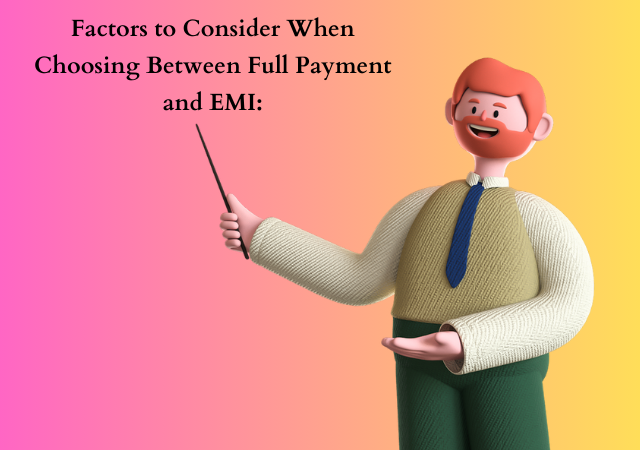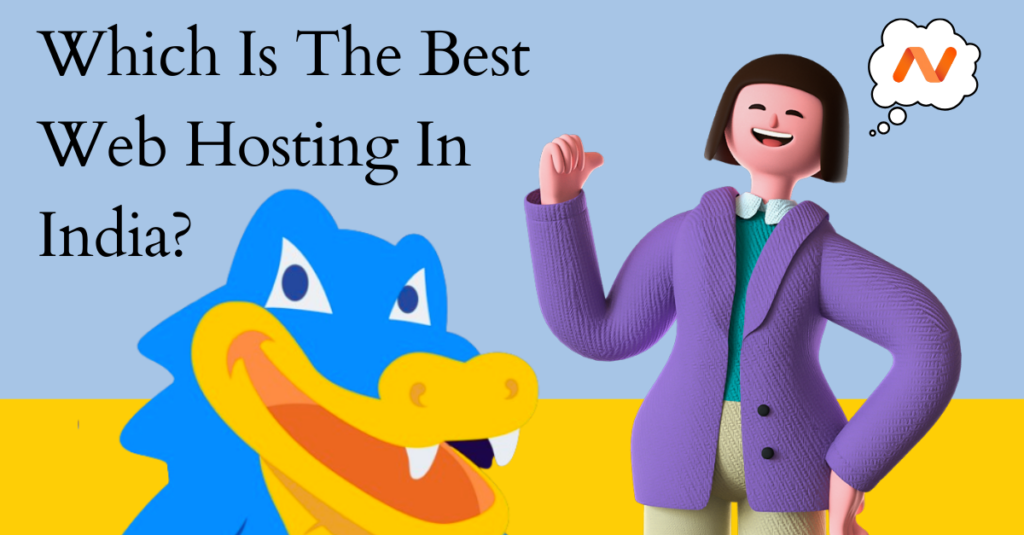Is Full Payment the Best Option, or Is EMI the Way to Go?
Introduction
In the realm of financial decision-making, individuals often find themselves at a crossroads when it comes to major purchases – should they opt for the simplicity of full payment or embrace the convenience of Equated Monthly Installments (EMI)? This dilemma lies at the heart of a crucial choice that can significantly impact personal finances. In this exploration, we delve into the advantages and drawbacks of both options, dissecting the implications for individuals and their financial well-being. Full payment may offer immediate financial relief, but does it outweigh the benefits of spreading costs over time through EMI?
By examining factors such as cost savings, financial freedom, and affordability, we aim to provide a comprehensive understanding of these two payment methods, empowering individuals to make informed decisions aligning with their unique financial goals and circumstances.
Advantages of Full Payment:

1. Cost Savings:
-
- Avoidance of Interest Charges: One of the primary advantages of opting for full payment is the avoidance of interest charges associated with EMI. By settling the entire amount upfront, individuals sidestep the accrual of interest, resulting in considerable cost savings.
- Potential Discounts or Incentives: Some sellers offer discounts or incentives for customers who choose to make full payments. This can translate into immediate savings, providing an extra incentive to forego the convenience of EMI.
2. Financial Freedom:
-
- No Ongoing Commitments: Full payment liberates individuals from the burden of ongoing financial commitments. This financial freedom allows for a clean slate, unencumbered by monthly obligations, offering peace of mind and flexibility in future financial endeavors.
- Simplified Budgeting: Without the complexity of monthly installment payments, budgeting becomes more straightforward. This simplicity aids in better financial planning and allocation of resources.
Drawbacks of Full Payment:

1. Immediate Financial Impact:
-
- Depletion of Cash Reserves: Opting for full payment may result in a significant immediate financial impact, depleting cash reserves that could be allocated elsewhere. This can pose challenges, especially if unexpected expenses arise.
- Potential Disruption to Budget: A lump-sum payment might disrupt the budgetary balance, potentially affecting other financial goals or planned expenditures. Individuals need to assess their ability to absorb this immediate financial strain.
2. Opportunity Cost:
-
- Foregoing Investment Opportunities: Utilizing a substantial amount for full payment might mean forgoing potential investment opportunities that could yield returns over time. This opportunity cost should be carefully considered, especially for individuals with a keen eye on long-term financial growth.
- Impact on Liquidity: The impact of full payment on liquidity should not be underestimated. Having a significant portion of funds tied up in a single transaction may limit liquidity, affecting the ability to seize unforeseen opportunities.
Advantages of EMI:

1. Affordability:
-
- Breaking Down a Large Expense: EMI provides a practical solution for individuals looking to acquire high-value items by breaking down the cost into manageable monthly installments. This makes expensive purchases more affordable and accessible.
- Access to High-Value Items: EMI facilitates access to high-value items that might be beyond immediate budgetary reach. This is particularly advantageous for those who wish to enjoy the benefits of a purchase without incurring the full financial impact upfront.
2. Preservation of Cash Flow:
-
- Spreading Costs Over Time: EMI allows for the spreading of costs over an extended period, preserving cash flow and easing the strain on monthly budgets. This is particularly beneficial for individuals who prefer to maintain liquidity for other potential financial needs.
- Mitigating Immediate Financial Strain: By distributing payments over several months, EMI mitigates immediate financial strain, enabling individuals to better manage their resources and meet other financial obligations.
Drawbacks of EMI:

1. Accumulation of Interest:
-
- Total Cost of Ownership: While EMI provides affordability, it often comes with the accumulation of interest. The total cost of ownership over the EMI tenure may surpass the original purchase price, and individuals need to weigh this additional expense against the convenience of spreading payments.
- Impact on Long-Term Finances: The accrual of interest over the repayment period can have implications for long-term finances. Individuals should consider the impact on their overall financial health and whether the convenience of EMI justifies the additional cost.
2. Commitment and Obligations:
-
- Length of Repayment Period: Committing to an EMI plan implies a predetermined length of the repayment period. Individuals need to assess whether this aligns with their financial goals and whether the extended obligation is acceptable in the context of their overall financial plan.
- Potential Penalties for Early Repayment: Some EMI plans may incur penalties for early repayment. This aspect should be carefully examined, especially for those with the intention and means to settle the outstanding amount ahead of schedule.
Factors to Consider When Choosing Between Full Payment and EMI:

1. Financial Situation:
-
- Current Income and Expenses: Assessing current income and expenses is paramount in determining whether a full payment or EMI aligns with one’s financial situation. Understanding the monthly budgetary constraints is crucial.
- Emergency Fund Considerations: Individuals should factor in the importance of maintaining an emergency fund. Opting for full payment may deplete cash reserves, potentially impacting the ability to handle unforeseen expenses.
2. Purpose of the Purchase:
-
- Asset Depreciation: Consider the depreciation rate of the intended purchase. If the asset depreciates rapidly, full payment may be more appealing to minimize the overall cost.
- Lifespan of the Product or Service: For items with a longer lifespan, EMI might be a viable option as it allows for spreading payments without necessarily incurring excessive interest charges.
3. Future Financial Goals:
-
- Savings and Investment Objectives: Evaluate how the chosen payment option aligns with long-term savings and investment objectives. Full payment might free up resources for investment, while EMI preserves liquidity for other financial goals.
- Impact on Credit Score: Both full payment and EMI can impact credit scores. Understanding this impact and its relevance to future financial endeavors is crucial for informed decision-making.
Case Studies and Examples:
1. Real-life Scenarios Illustrating the Pros and Cons:
-
- Explore real-life scenarios where individuals have opted for either full payment or EMI, showcasing the outcomes and lessons learned.
- Analyze different financial situations, such as a sudden windfall or a planned purchase, to highlight the decision-making process and its consequences.
2. Comparison of Total Costs in Different Situations:
-
- Present a comparative analysis of the total costs associated with full payment and EMI in various scenarios.
- Consider factors such as interest rates, discounts, and penalties for early repayment to provide a comprehensive overview of the financial implications.
Expert Opinions and Recommendations:
1. Insights from Financial Advisors:
-
- Gather insights from financial experts on the considerations individuals should weigh when deciding between full payment and EMI.
- Explore the nuanced perspectives of financial advisors to provide a well-rounded view of the decision-making process.
2. Industry Experts’ Perspectives on Full Payment vs. EMI:
-
- Seek opinions from industry experts, including economists, finance professionals, and academics, to gain a broader understanding of the economic implications of both payment methods.
- Explore whether certain industries or sectors favor one payment option over the other and why.
Conclusion (Is Full Payment the Best Option, or Is EMI the Way to Go?)
In conclusion, the choice between full payment and Equated Monthly Installments (EMI) is a nuanced decision with implications for personal finances. Full payment offers immediate cost savings and financial freedom but may impact liquidity and present an opportunity cost. On the other hand, EMI enhances affordability and preserves cash flow but comes with interest accumulation and commitments. When deciding, individuals must assess their financial situation, consider the purpose of the purchase, and align with future goals. Real-life case studies, cost comparisons, and expert insights can provide valuable perspectives, empowering individuals to make informed decisions tailored to their unique circumstances and aspirations.

My name is Rohit Vagh and I’m a content writer specializing in fashion and lifestyle. I have three years of experience in this field and have written various articles. My writing style is creative and engaging, and I strive to create content that resonates with my readers. I have a deep passion for fashion and am constantly researching the latest trends and styles to make sure my readers are up to date. I’m excited to continue my career in blogging, and I’m always looking for new opportunities in the fashion and lifestyle space.





